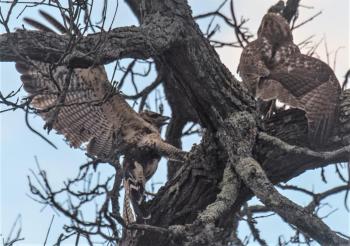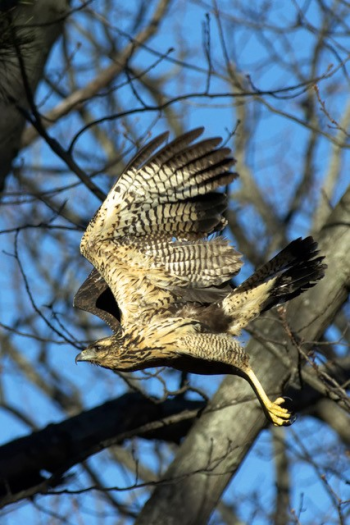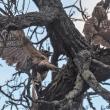Tropical Hawk Comes to Maine
Maybe some things really are not meant to be. New England Patriots fans will know what we mean considering the way the Patriots lost to the Miami Dolphins in Miami last Sunday yet again, despite holding a lead with just seconds left in the game.
We’ve wondered if we might have the same streak of bad luck when it comes to a certain highly unusual bird that has taken up residence in Portland in recent weeks.
That bird, a single immature great black hawk, has tantalized the bird world since April of this year when it showed up in Texas, becoming the first recorded instance of the species to have ever been found in the U.S. The bird disappeared only to be discovered in a most bizarrely far away place—our own Biddeford, Maine, in June!
Again it vanished, and this time for a good long time.
The great black hawk is in fact a rather tropical bird. The northernmost extreme of its normal range is in coastal Mexico, about 250 miles south of the Texas border. From there its range extends southward through Central America and South America all the way to northern Argentina. Great black hawks are by all accounts a widespread and relatively numerous species. But one thing they have not been known for is wandering. In a sense, the opposite has been true as they have always been thought of as an essentially non-migratory, resident species.
This particular great black hawk apparently missed what ornithologists thought was the tendency of its species to stay put. A young bird in its first year, this great black hawk for some strange reason just started moving north. When it was last seen in June in Biddeford, it had taken off flying high out over the ocean before heading north yet again.
And then, almost five months later, a fuzzy video taken with an iPhone was submitted to a Facebook page for help in the identification of a strange bird.
The video showed an immature great black hawk in an urban park.
And the park wasn’t in Mexico or Venezuela or Brazil.
It was Deering Oaks Park, right off I-295 in Portland, Maine, almost next door to where crowds go in summer to watch Portland Sea Dogs baseball and in winter to see Maine Red Claws basketball. The rediscovery of the bird and its amazing story captivated not only birders, but the media as well. Stories about Portland’s tropical visitor have appeared in news outlets across the U.S. and the world—even in some media outlets in places as far away as Taiwan.
It wasn’t long before dozens and then hundreds of birders, some from as far away as Toronto and Minnesota and probably even farther, descended on the park. The bird found a ready supply of gray squirrels, thanks to the squirrel boom that we recently wrote about, and has been regularly seen helping itself to squirrel breakfasts, lunches, and dinners. The only problem that the bird seems to be encountering so far is not the cold but the red-tailed hawks that consider it an unwanted competitor, and occasional overzealous bird photographers that get too close. Both the hawks and the photographers have sometimes caused the bird to fly away to unknown quarters for periods of time.
It is those times, when the hawk is absent, that we have managed to find time to try and see the bird. Twice we’ve traveled down and stopped by the park, chatted with birding friends old and new, but with nary a glimpse of this special bird.
We haven’t given up; perhaps we’ll have better luck than the New England Patriots did against the “Miami Miracle” and the bird will stay around and stay healthy and safe and give us another chance to see it on its historic adventure to Maine. If you, too, decide to look for the bird, please be careful to enjoy its presence from a respectful distance so it has the best chances for finding food and surviving a Maine winter.
Jeffrey V. Wells, Ph.D., is a Fellow of the Cornell Lab of Ornithology. Dr. Wells is one of the nation's leading bird experts and conservation biologists and author of the “Birder’s Conservation Handbook.” His grandfather, the late John Chase, was a columnist for the Boothbay Register for many years. Allison Childs Wells, formerly of the Cornell Lab of Ornithology, is a senior director at the Natural Resources Council of Maine, a nonprofit membership organization working statewide to protect the nature of Maine. Both are widely published natural history writers and are the authors of the popular book, “Maine’s Favorite Birds” (Tilbury House) and the newly released “Birds of Aruba, Bonaire, and Curaçao” from Cornell University Press.
Event Date
Address
United States






























